Topics:
Sales ProcessSubscribe now and get the latest podcast releases delivered straight to your inbox.
Fix Your Sales Process by Asking: ‘What Decisions Does Someone Need to Make To Buy From Us?’

By Chris Duprey
Apr 5, 2023

[Listen to this article on our podcast, But We're Different. ]
I hear this a lot from business leaders — and it’s always kind of sheepish: “Chris, how do we actually make a sales process?”
And I get it. Sales processes don’t just happen. They don’t just appear out of thin air.
Instead, healthy, growing companies realize that they don’t actually have a sales process in place.
It often comes about like this: Company founders do a lot of the selling in the early days. Owners know what I mean. They have their hands in everything as their trying to get the business off the ground.
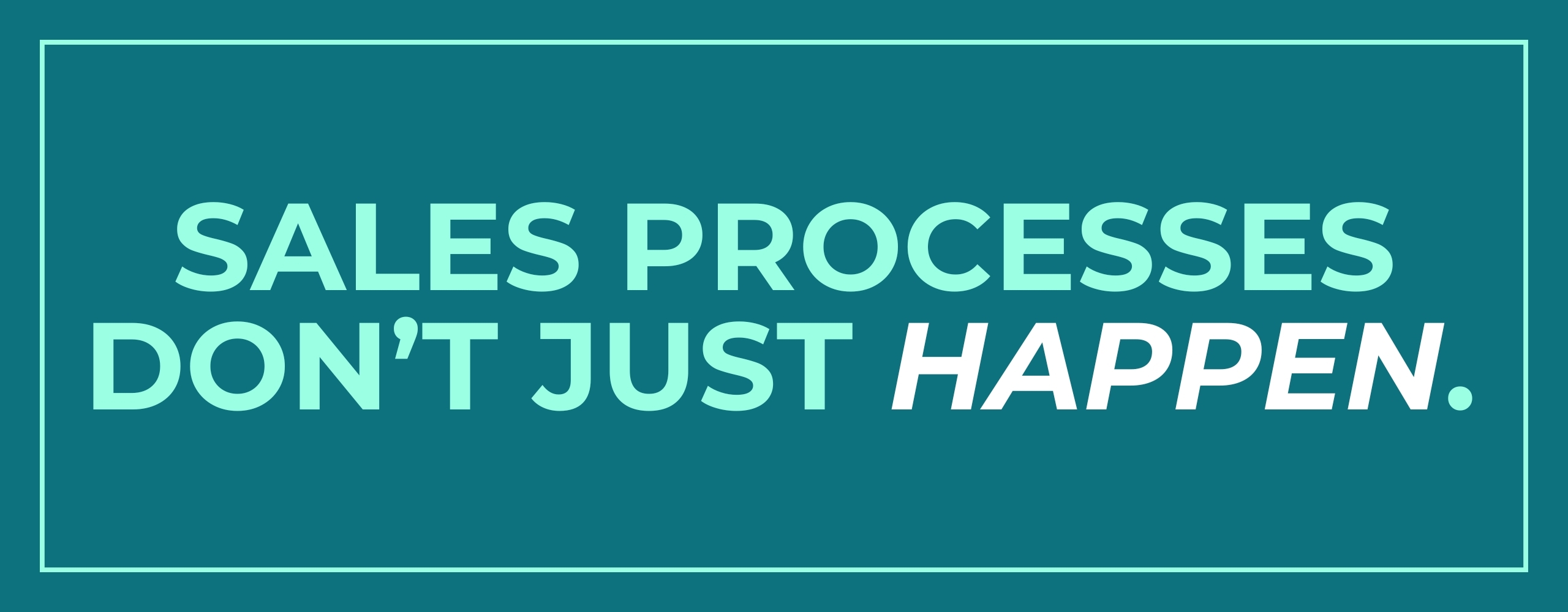
You gain some traction and see some success and start growing. Leaders find themselves hiring their own replacements.
They hire marketers to take over marketing, designers to take over design, finance people to take over the numbers. And, sometimes last of all, they hire sales.
Whether that’s the path your company took or not, you might find yourself in the same situation: Suddenly trying to standardize a process for several (or more!) sales reps who might be new to the business.
If you’re building a sales process for the first time — or tweaking an existing process — it’s important to get this right.
Here’s how.
Make your sales process about buyer decisions, not arbitrary stages
Every time I start working with a new sales team, I ask the same question: What decisions does a customer have to make to buy from you?
Every time, I get the same answer: “Well, Chris, we’ve never really thought about it like that.”
That’s a problem. And it results in a lot of backward sales processes.
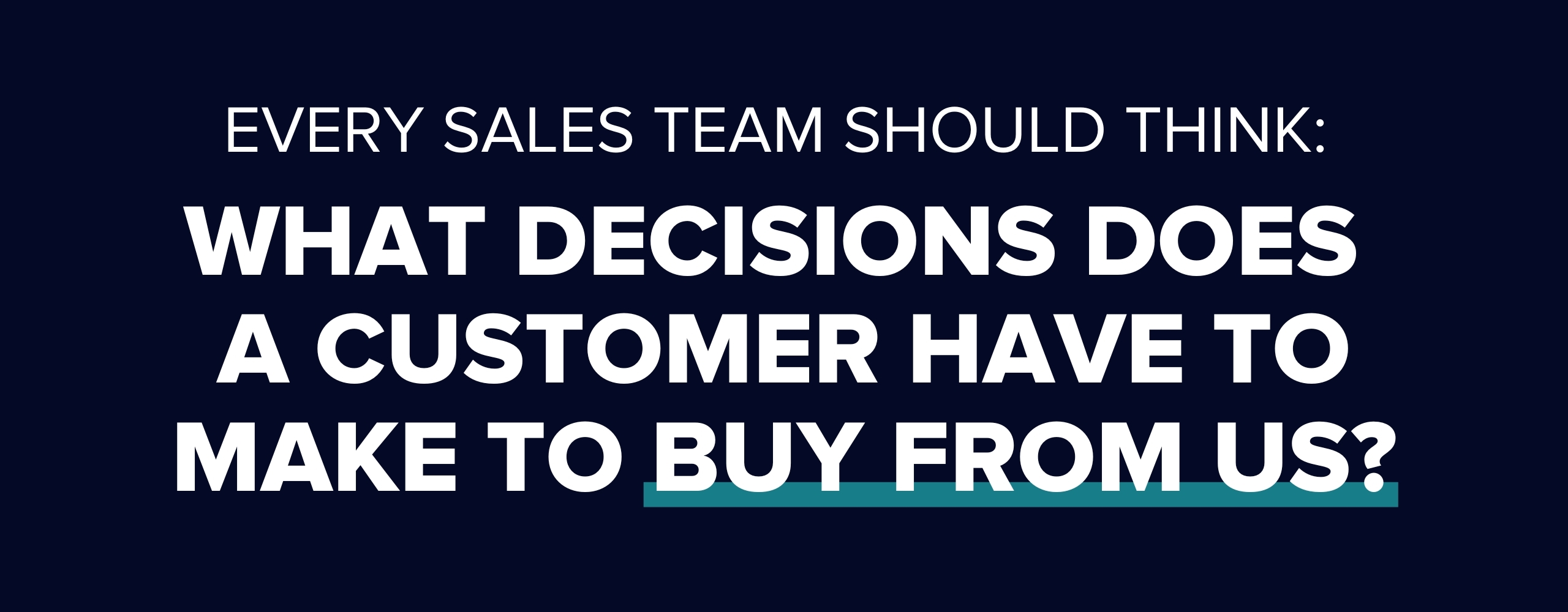
Too often, businesses try to build a sales process by separating it into stages.
First you have your discovery stage.
Then your qualification stage.
Then there’s a prescription stage.
Then there’s a logistics stage covering contract details.
Yours might look different, but you get the idea.
And businesses tend to think of each stage as a meeting or call. So, first you have your discovery call. Then you have your qualification call, and so on.
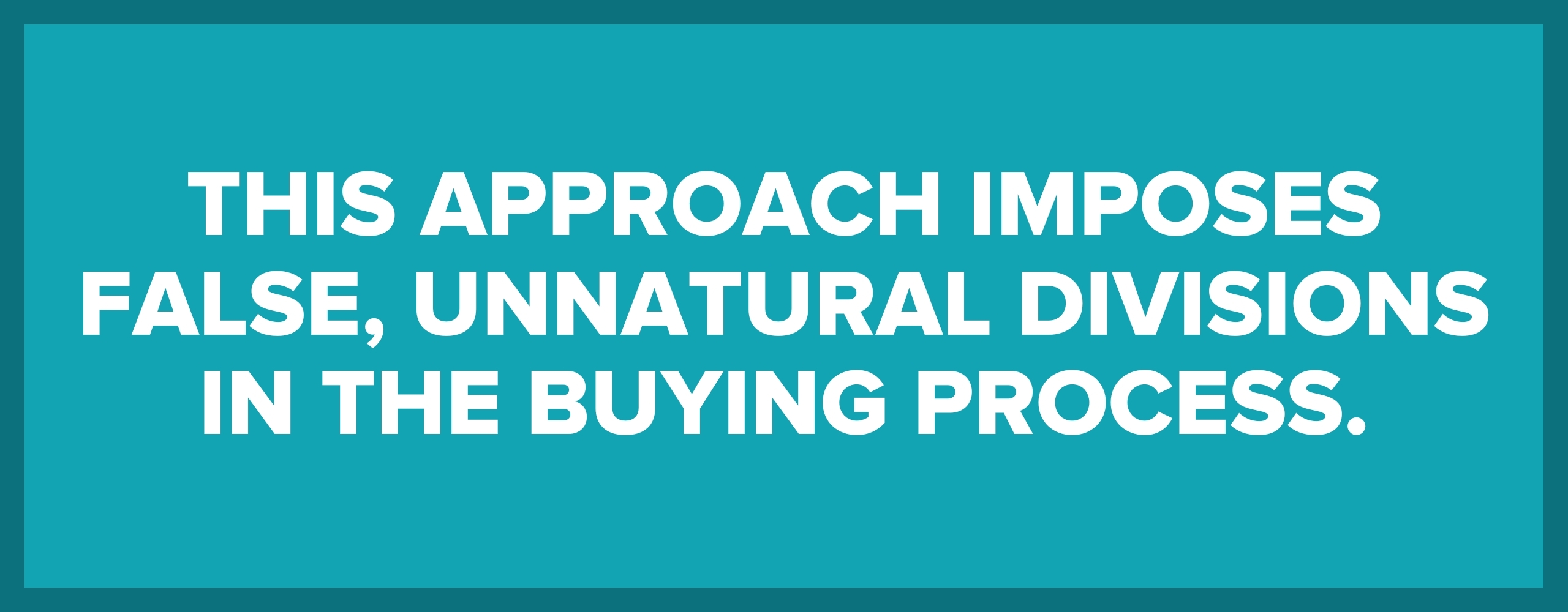
That’s the wrong approach because it imposes false, unnatural divisions in the buying process.
And there are two costly results from this:
- Rushing people through a process before they’re ready, making them less likely to buy.
- Dragging people through steps they don’t need to take, making them less likely to buy.
There’s nothing wrong with stages, per se, but we should adapt them to the buyer, not the other way around.
Buyer decision points are the foundation of sales
Let’s go back to that first question: What decisions does a customer have to make to buy from you?
Buyer decision points should be the foundation of your sales process.
Think about it like this. If you sell cars, what decisions does a buyer need to make before they are ready to buy?
- First off they need to decide that it’s time to upgrade their old car.
- Then they need to decide about their budget.
- Then they need to decide about brand, model type, and features, and everything else.
If you start your sales process by talking about how your pickup truck model has better towing capacity than its competitor — that message won’t mean anything if the person is not in the market to buy a car at all.
If they haven’t made the decision to actually buy a car, the message fails to resonate.
Next up is budget.
If your product is way outside what they’re looking to spend, even the best sales pitch is not going to land. Sure, I might be interested in the fact that a Rolls-Royce Ghost has more horsepower than a Bentley Continental GT, but that’s not going to prompt a purchase because I’m not about to drop $250,000 on a car.
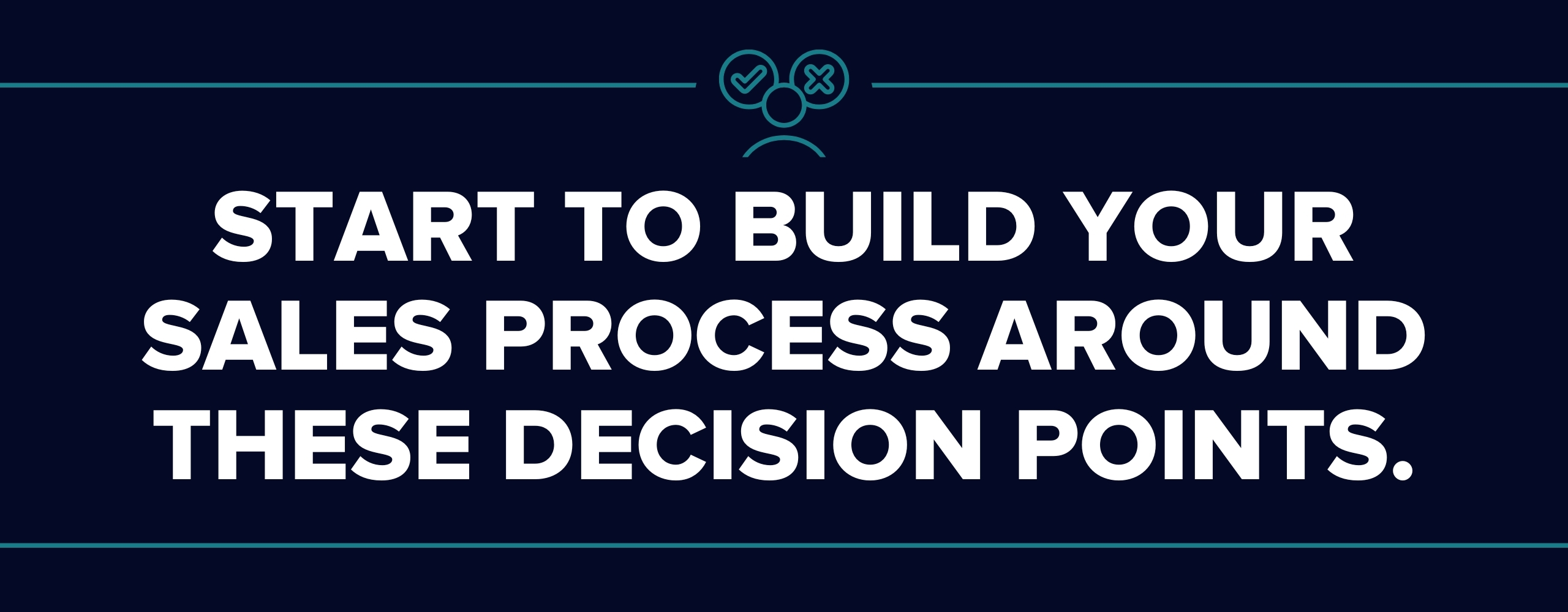
If I haven’t made the decision to spend a quarter million on a car, the message fails to resonate.
These mistakes seem obvious from the outside, but we do the same thing in our sales processes all the time.
The car selling process has to start with a shared understanding that the person you’re talking to is in the market for a car. If they haven’t made that decision, there’s no sense moving them on to the next stage of the sales process.
But it works the other way, too. If someone comes in with a strong intent to buy (they’re in the market, have the budget, and know what model they want), there’s no sense in slowing them down and saying, “I’m glad to hear you’re in the market to buy. Come back next Saturday and we can talk about your budget.”
Now, apply this same logic to your own sales process.
What decisions does your buyer have to make?
Get together your key sales leaders and start with a blank whiteboard.
At the top, write “What decisions must a prospect make to buy from us?” (If what you sell is diverse enough to need to do this more than once, do it more than once.)
Working together, start to chart the decision points your buyer goes through.
Don’t skip steps. Some of the decisions might be bundled together, but don’t worry about that now. Just get everything down.
Once you’ve got it laid out, start to build your sales process around these decision points. This way, your stages won’t feel arbitrary.
The buyer-centered sales process
When I do this with my clients, I always remind them of a few things:
- Most purchases start with a potential customer who is ‘problem aware’. Whether it’s a new problem (I need insurance for the boat I just bought) or a persistent problem (We’ve needed a better project management tool for a while, and this last mistake was the final straw), this is when they’re ready to start exploring their options. But it will take a while before they’re ready to buy.
- Some buying decisions are made long before the prospect enters your sales process. Good marketing should take care of a number of these, providing materials to help prospects self-educate and then opt into a sales process that’s well-suited to their needs.
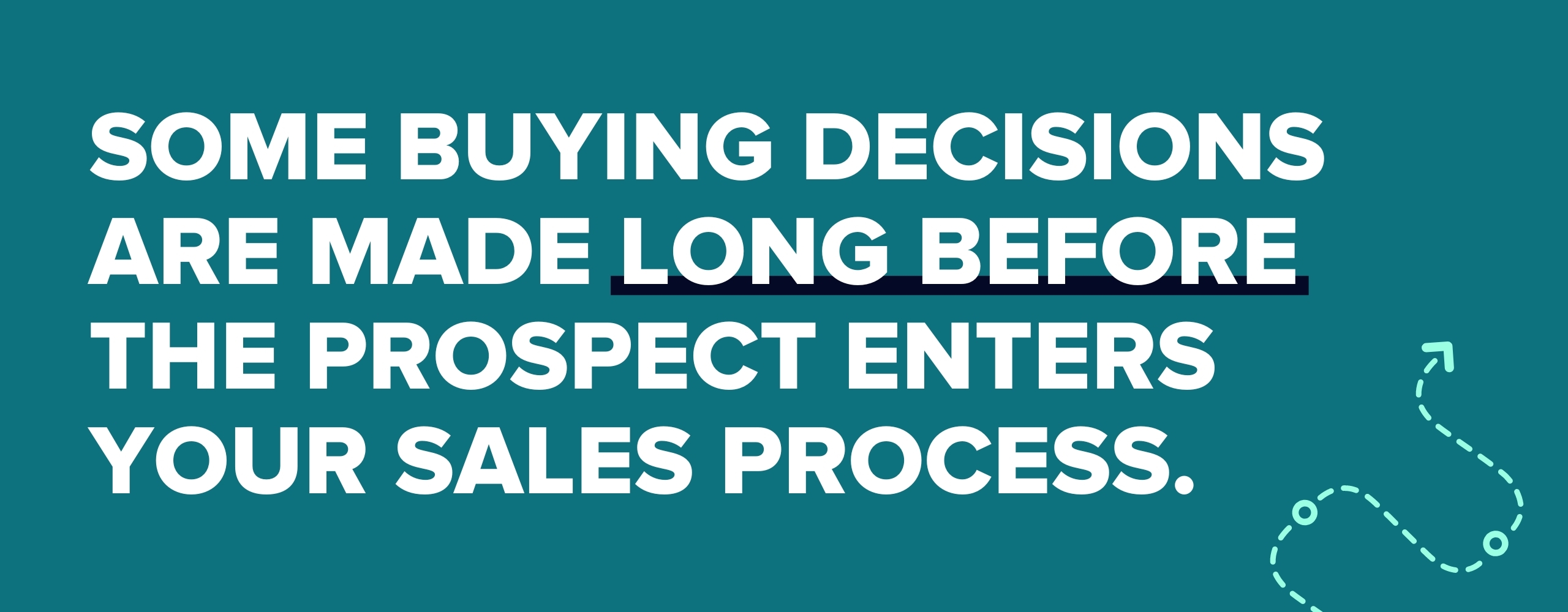
- Not every decision point needs to be handled in a separate meeting. Your buyers might have 10 big decisions to make. Those definitely don’t need to be 10 different meetings. Think about the car example above. No good car salesperson is going to force someone to go home and think more about the features they want. If someone is ready to move forward and has crossed a few decision thresholds at once, no need to hold them back.
- …But don’t move people forward until they’ve crossed each decision threshold. At the same time, you don’t want to move people forward before they’re ready. If you’ve got a prospect and they haven’t made a certain decision, don’t move them forward. They’re likely not ready. And moving them forward too soon will make it less likely they’ll buy from you.
- You need to make room for non-traditional customers. You’re going to standardize your sales process based on your ideal customer profile (ICP). That’s a good thing. But remember that there will be buyers who don’t fit the mold. Be prepared for them, too.
Finding the right balance: rigidity and personalization
There are clear benefits to a standardized sales process: It’s repeatable, quick to learn, and easy to measure.
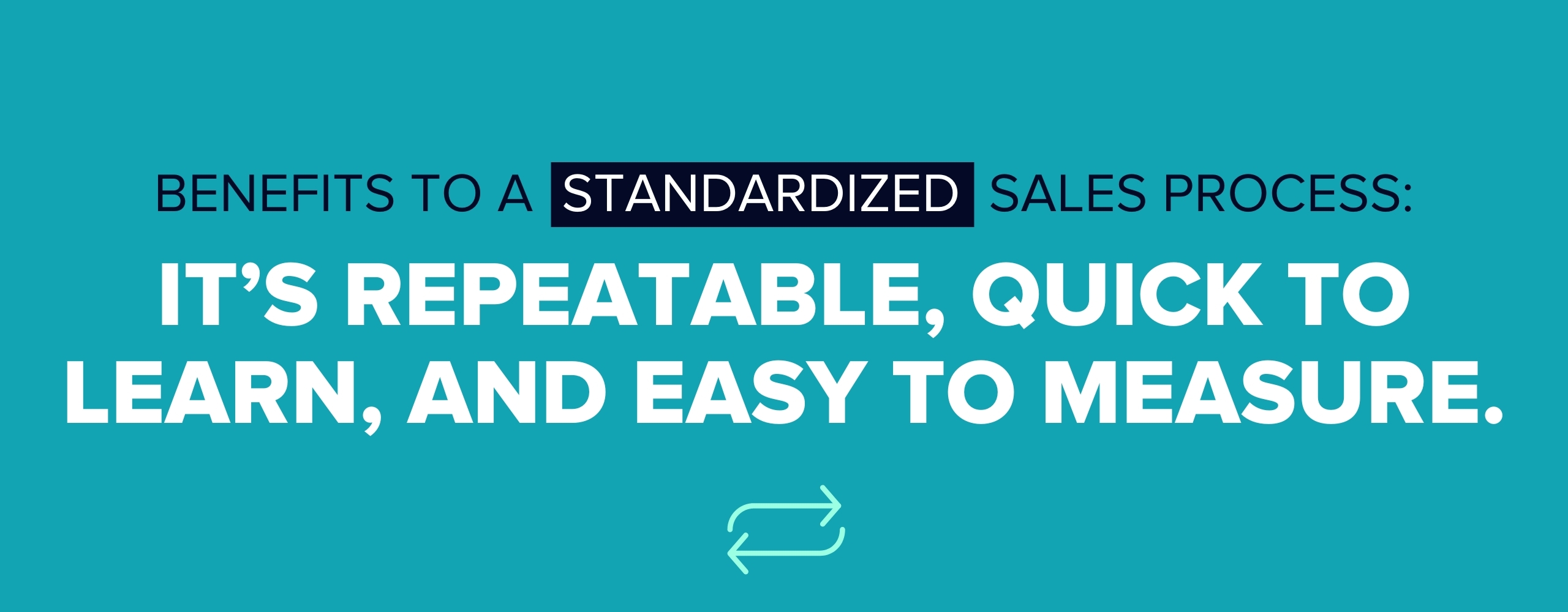
There are clear benefits to a bespoke, personalized sales process: Every buyer is different, every salesperson has different skills.
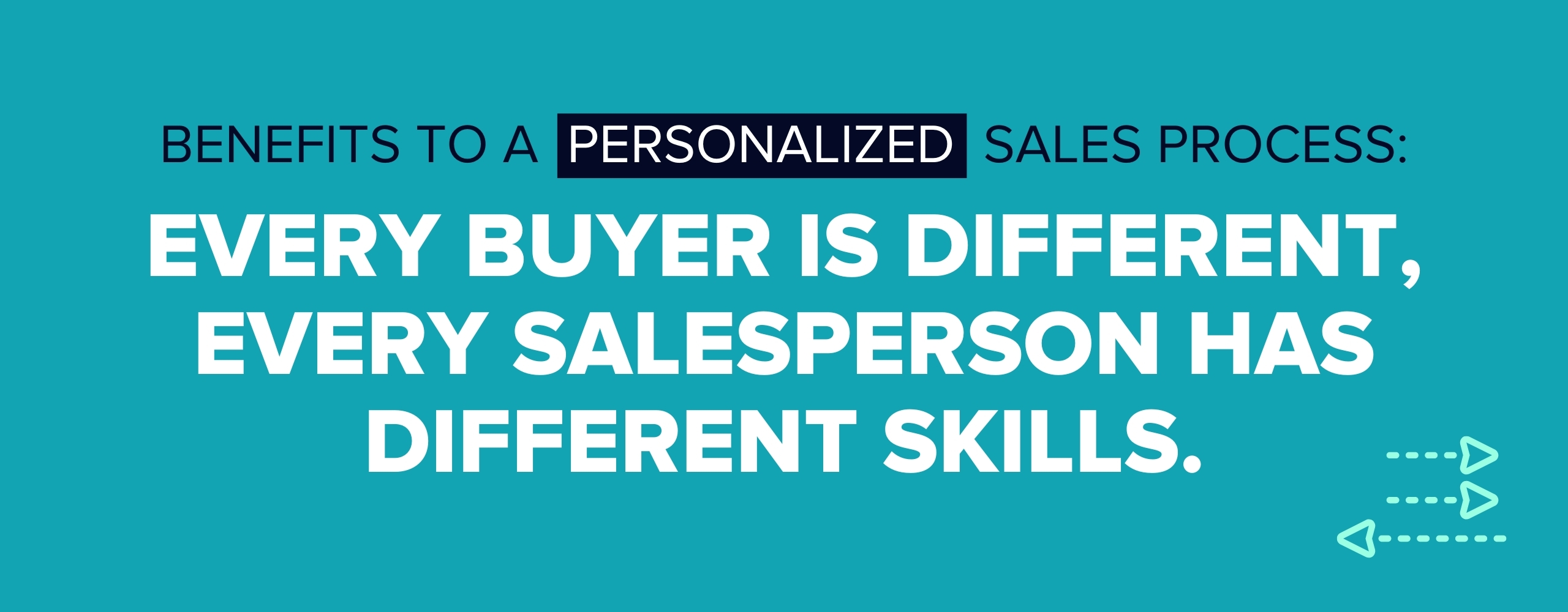
The sweet spot is somewhere in the middle. You need a tried and true sales process for all the obvious reasons, but you need adaptability, too.
In the course of growing your business, the pendulum may swing back and forth.
At IMPACT, we went through a phase where we made our sales process very cut and dry. It was simple and prescribed and easily repeatable by a variety of sales reps.
The only problem was that we were forcing ready-to-buy prospects to jump through hoops that made no sense for them. If we had a CEO who was eager to move forward, we’d hold off on introducing them to a coach because that usually didn’t happen until the third call. So we’d slow the deal up because the process said so.
We eventually realized how detrimental this was, and we loosened up our process to allow for more customization.
Eventually we may feel like we’re playing too fast and loose, and we’ll go back in the other direction.
The lesson here is that sales processes are never finished. They’re never perfect.
Need a better sales process? Listen to your customers
If you have a sales process already, let me start by confirming what you’re already guessing: it’s not as good as it can be.
If you don’t have a sales process at all, you should build one based on the advice above.
Remember that the solution to either problem is right at your fingertips: Your customers. Sales leaders need to watch more sales calls and check in with prospects — both those who buy from you and those who don’t. Listen to their fears, worries, and concerns.
Pay attention to decision points. What are the decisions that most buyers need to make before they commit to a purchase?
When you build a process with your buyers’ needs in mind, you’ll close more future prospects.


Order Your Copy of Marcus Sheridan's New Book — Endless Customers!